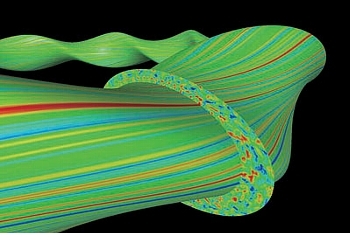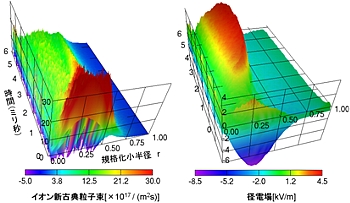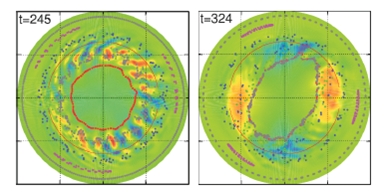ACTIVITY
4. Neoclassical and Turbulent Transport Simulation Group
|
We promote the gyro-kinetic, drift-kinetic and/or fluid model simulation
studies on turbulent and neoclassical transport in magnetically confined
plasmas such as LHD. Main research objectives are evaluation of transport
properties in LHD experiments, understandings of the transport mechanisms,
validation of the simulation results toward prediction, and R&D of
the simulation codes. We also grapple with modeling of transport coefficients
for reinforcing an integrated transport code, using analyses of simulation
data.
|
|
 |
 |
|
Gyrokinetic simulation of the ion temperature gradient turbulence and zonal
flows in LHD plasma.
|
Time-evolutions of the neoclassical ion particle flux (left) and the radial
electric field (right) in LHD plasma. The radial electric field is spontaneously
formed so that the ion and electron fluxes balance with each other. In
the case shown here, the electric field transition from negative to positive
observed in 0.2 < r < 0.6 with neoclassical transport reduction leads
to improvement of the plasma confinement.
|
 |
|
Poincare map of electrostatic potential profile and magnetic field derived
from the reduced two-fluid simulation in toroidal plasmas. The turbulent
states are shown before (t=245) and after (t=324) the macroscopic magnetic
island appears.
|








 To NIFS
To NIFS